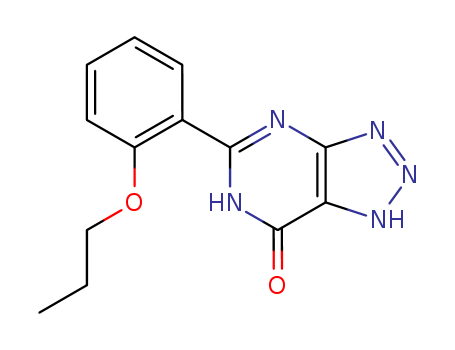- Chemical Name:ZAPRINAST
- CAS No.:37762-06-4
- Molecular Formula:C13H13 N5 O2
- Molecular Weight:271.279
- Hs Code.:
- Mol file:37762-06-4.mol
Synonyms:7H-1,2,3-Triazolo[4,5-d]pyrimidin-7-one,1,4-dihydro-5-(2-propoxyphenyl)- (9CI);2-(2-Propoxyphenyl)-8-aza-6-purinone;2-(o-Propoxyphenyl)-8-azapurin-6-one;8-Aza-2-(2-propoxyphenyl)-6-purinone;Mand B 22948;M&;B 22,948;Zaprinast;




